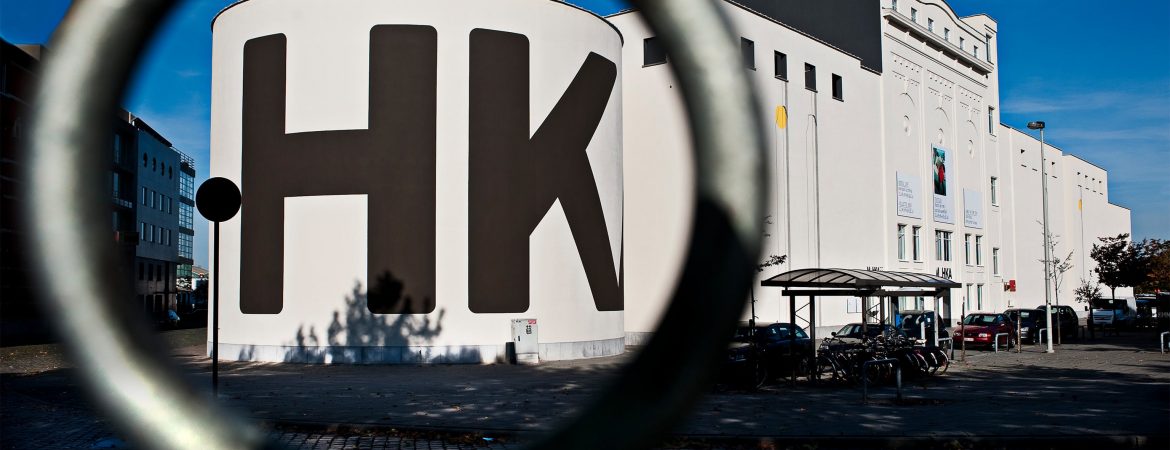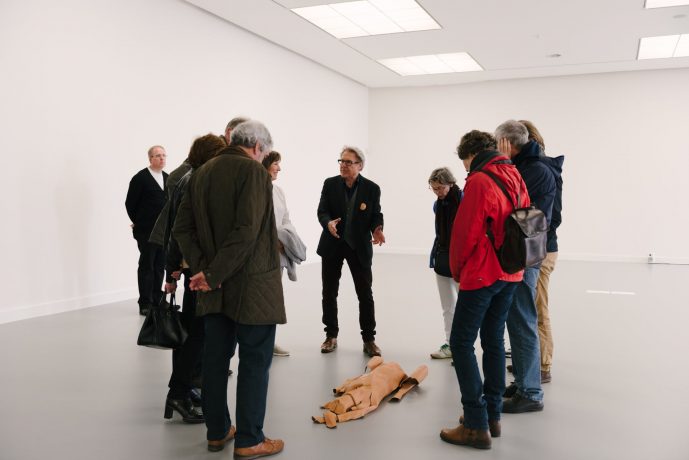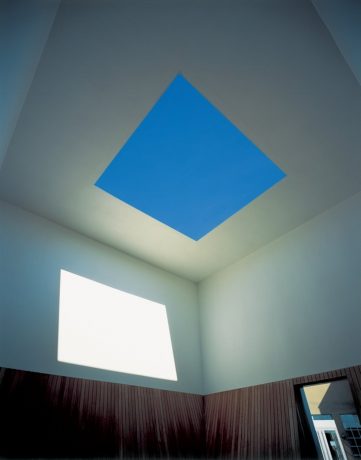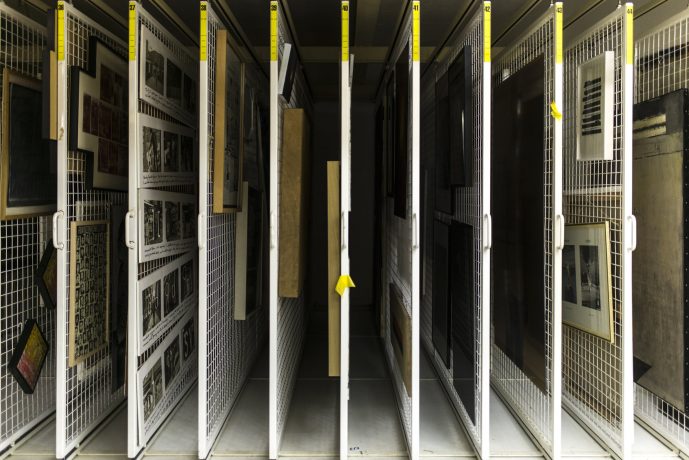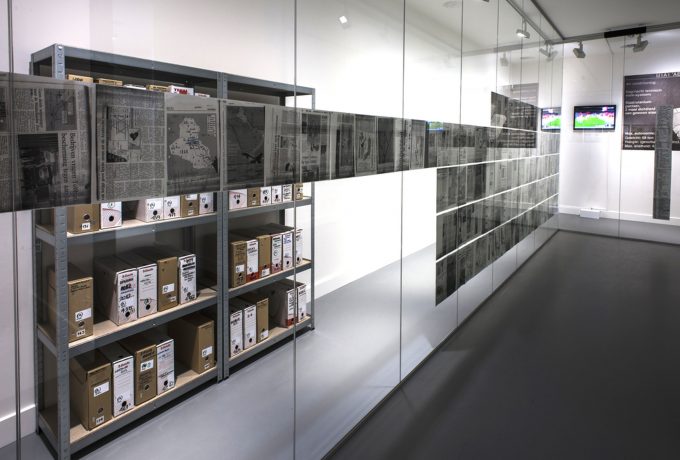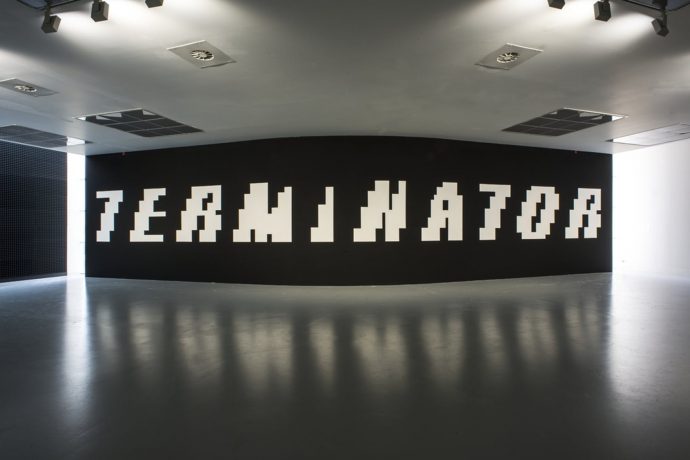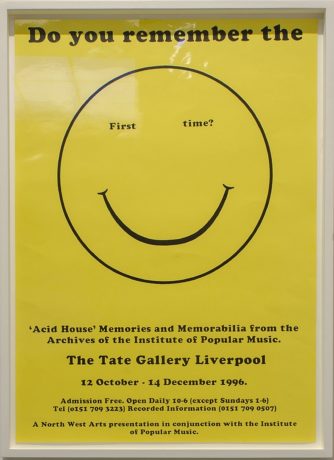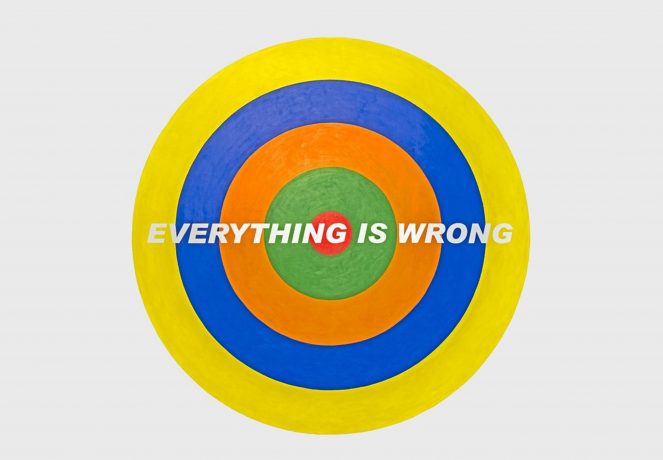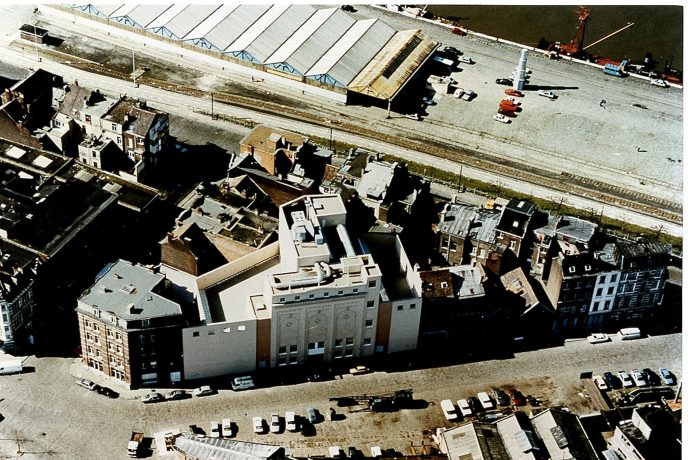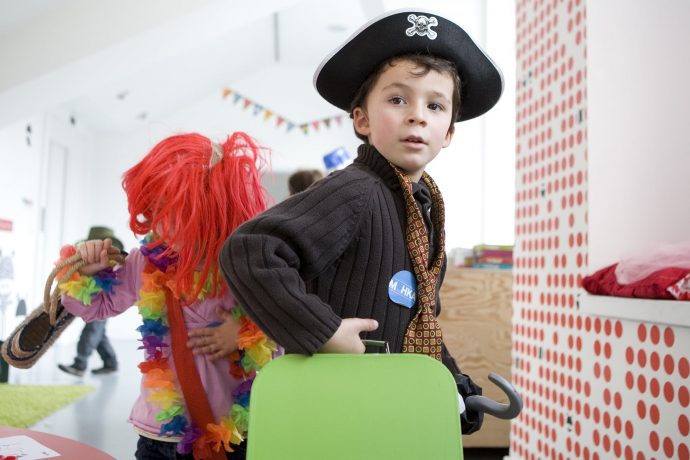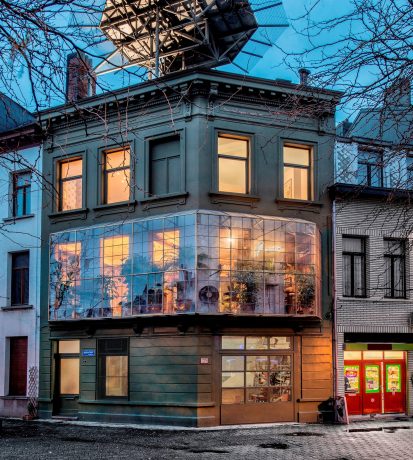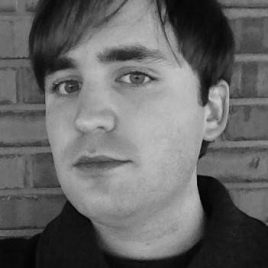For many years, M HKA focused on temporary exhibitions rather than ones from their permanent collection of around 5000 objects; however, from 2017 to 2020, the museum is displaying a permanent collection exhibition simply titled The Collection. This exhibition, which also includes local and donated works in addition to ones from the permanent collection, features artwork by several internationally known artists including Marina Abramović and Ulay, Almagul Menlibayeva, Panamarenko, and the late Gordon Matta-Clark. The Collection gives visitors a great chance to see some of the Museum’s artwork which was previously unavailable for viewing. Although there has been nothing said about it yet, I hope that M HKA will continue to display works from its permanent collection in new exhibitions after The Collectionn ends in April 2020!
One exhibition at M HKA that I personally find interesting is Gulf War 1991 by Belgian artist Jef Geys. This 2017 exhibition looks like something from a history museum or archive; however, it is in fact an art installation. Geys mixed together objects such as 1991 newspaper clippings, a satellite dish and shelves of archival boxes into an installation representing communications during the Gulf War. Although they are very different in subject matter, seeing the newspapers in Gulf War 1991 reminded me of a 2015 work I saw at MoMA in New York called Memorial by Uruguayan artist Luis Camnitzer. Memorial looks like pages from a phone book, but in reality, is a list of missing people from the time of Uruguay’s 1973–1985 military dictatorship designed to look like framed phone book pages, as opposed to the real newspaper pages of Gulf War 1991. Both Geys’ Gulf War 1991 and Camnitzer's Memorial appeal to me because they depict a certain time and place in history by means of everyday objects.
Another interesting exhibition at M HKA is 2016’s creative Energy Flash — The Rave Movement. This exhibition, the first of its kind on the subject, focused on the European rave scene of the 1980s and 1990s through paintings, video art, installations and photographs by several international artists. Some of the artwork displayed in the Energy Flash exhibition included works such as German photographer Andreas Gursky’s 1995 photograph Union Rave, Serbian artist Aleksandra Domanović’s video art piece 19:30, American artist Martin Kersels’ Brown Sound Kit installation, and English artist Jeremy Deller’s fictional rave advertisement poster featuring the famous symbol of rave culture, the smiley face, called Do You Remember the First Time?. The mix of countries and art mediums represented by Energy Flash illustrates the widespread nature of rave culture during its heyday. Finally, the exhibition’s opening included concerts by several DJs – most notably former Kraftwerk member Wolfgang Flür – to give visitors a small taste of rave culture. M HKA’s Energy Flash was successfully able to mix seeing artwork and listening to music to create a multisensory exhibition on rave culture.
Besides its artwork, the architecture of M HKA is also of note. The main structure, which was previously a silo, warehouse and nightclub, opened its doors as the new art museum in 1987. Restorations and additions were added in the early 1990s and 2000s along with a major remaking of the museum’s exterior façade in 2009. The mix of 30 years’ worth of restoring, refurbishing, and redesigning both the interior and exterior has caused some visitors to criticize the layout and structure of the museum; however, its unique architectural design does make for a visual spectacle worthy of a contemporary art museum.
One particularly popular aspect of M HKA is its kids programming. Even if you or your kids are not particularly interested in the contemporary artwork on displayed at the museum, you should still take advantage of children’s activities provided there. These include holiday workshops, birthday parties (only available on Wednesdays or Saturdays when scheduled ahead of time), and Sunday Family Days. M HKA also features a special room called the Salon where visitors can enjoy interactive artistic activities. Besides children, the Museum also hosts the monthly Meet Me at M HKA event for those with early dementia. This is a nice event that focuses on an age group and condition often left out of museum programming.
If it’s a Tuesday or Thursday, you should also consider visiting the nearby Panamarenko house as well. Owned by M HKA since 2007, this restored former house and art studio of noted Belgian sculpture Panamarenko includes several of his sculptures on display. If you schedule a tour ahead of time, you can enjoy a special drink as well.
If you are looking for a gift or souvenir, then take a few minutes to browse the shelves of M HKA’s gift shop. Items for sale include standard museum fare such as postcards, tote bags, and art exhibition catalogues. If you are looking for food, the museum includes the M HKAFE and, during the summer months, the summer bar on the rooftop as well. Even if you are not hungry, it is still worth going upstairs to the M HKAFE to see a few nearby works by artists including James Turrell and the late pop artist Keith Haring.
Ultimately, because of M HKA’s focus on rotating exhibitions, your visit there can vary depending on the current exhibitions. If you are planning a visit to Antwerp, but have not set a date yet, then you ought to check in advance to see which exhibitions are being show before you visit. That way you can plan to visit the Museum during a truly unique exhibition, such as Energy Flash, that you might miss otherwise!
